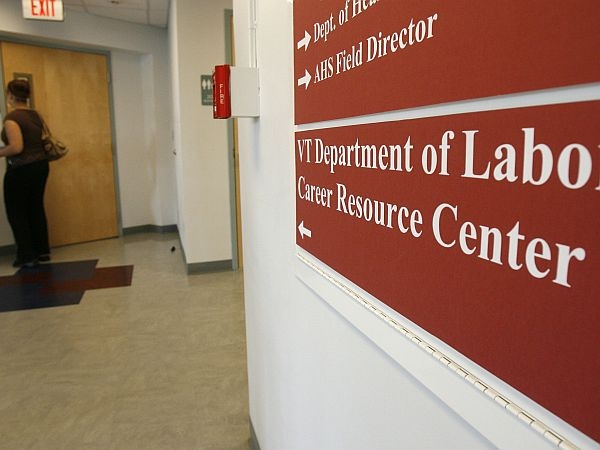
(Host) Once a month like clockwork, we hear an announcement about the state unemployment rate.
In reality, the figure we hear is one of half a dozen unemployment figures the state tracks, and it’s compiled in a way that might surprise you.
VPR’s Steve Zind explains.
(Zind) Think of the economy as a hospital patient attached to a battery of monitors that track every little twitch, tremor and tick. Manufacturing inventories, housing vacancies, durable goods shipments, jobless claims, consumer confidence; the economy’s medical chart is a long one.
As laypeople most of those numbers pass by without registering very much. But there’s one figure we all take note of each time it’s announced: It’s the state’s monthly unemployment rate.
(Charnoff-VPR newscast) "…labor officials say Vermont‘s unemployment rate has dropped to 5.1 percent, the lowest statewide rate since October of 2008…"
(Zind) Although it’s a Vermont figure, the federal government is actually responsible for determining each state’s monthly unemployment number, with input from the state.
The government has been issuing monthly state unemployment numbers since 1940. Tracking unemployment began then, ironically, as a post-depression WPA program to create jobs.
The methodology has been redesigned over time, but for more than 70 years the main source of information for determining the unemployment figure is a monthly survey of families conducted anonymously by the U.S. Census Bureau.
In Vermont about 1,400 families are surveyed and asked a series of questions that take about 20 minutes to answer. The same family is typically polled for several months before they’re cycled out of the rotation.
Their answers about the employment status of their household are the key, but there are other figures that go into the equation; including claims for state jobless benefits, job numbers from Vermont employers and historical data.
(Barewicz ) "It’s the best estimate out there. I’ll say that first and foremost. The methodology has been tested and tinkered with over time."
(Zind) Mathew Barewicz is Economic and Labor Market Information Chief for the Vermont Department of Labor.
Barewicz says because of the margin of error inherent in calculating unemployment, it really should be expressed as a range, not as a single number. So the most recent Vermont unemployment figure isn’t as precise as 5.1. It’s really somewhere between 4.4 and 5.8 percent. Barewicz says the public and the press prefer a single hard number, though, so 5.1 is what we get.
(Barewicz) ""I have the unfortunate position of being a mediator between what we as statisticians or I as an economist want to report as a range versus an actual point estimate, saying, ‘this is what it is’ because ‘what it is’ is a difficult thing to assess."
(Zind) The widely quoted state jobless number is known as the "U-3" measure. It considers anyone unemployed who is out of work but looking for a job.
In addition to the U-3 figure, there are five other unemployment measures compiled by the government. Some are narrower and some are broader. One, known as U-6 also includes people who have given up looking for jobs and those who are working part time because they can’t find full time work.
In Vermont last year that measure stood at about 11.6 percent. The U-6 figure is often cited by those who say it gives a more complete picture of joblessness.
Tom Kavet is the economist for the Vermont Legislature. He says all six employment measures are useful.
(Kavet) "I look at all the figures. They tell me different things and you can see in periods of real economic stress like this, what’s happening in labor markets, so it gives you a fuller picture to look at more data.
(Zind) Kavet says the popular U3 unemployment rate is particularly helpful because it comes out every month.
(Kavet) "It’s a useful measure both because it’s timely and regional. We don’t have a lot of measurements at the state level that are as timely as this. It gives us a measure of how the state’s doing relative to prior periods and also relative to other parts of the country."
(Zind) In addition to being a tool for analysts, the unemployment rate also guides government funding decisions for programs like jobless benefits.
For VPR news, I’m Steve Zind.